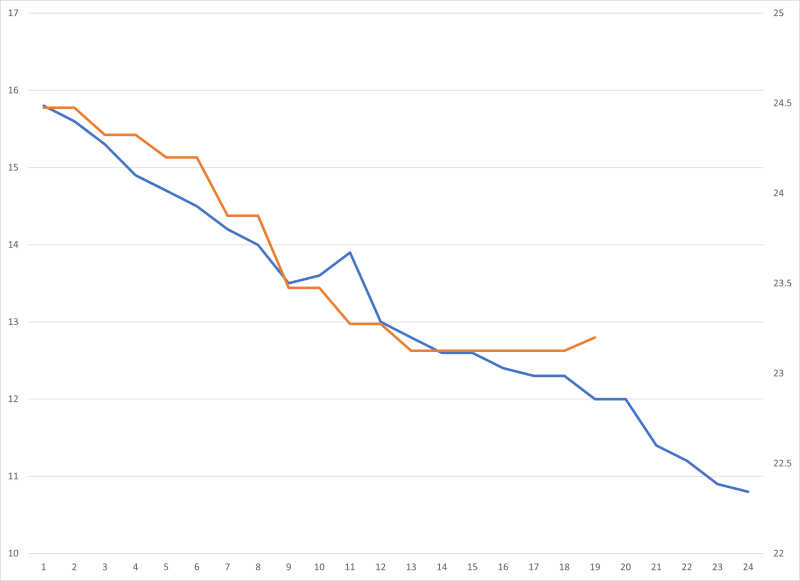nesamani1983
Mechanical
- Sep 3, 2011
- 23
Hi all, We have natural gas Pipeline laid in 1997. Pigging is done quarterly. API 5L X46 PIPE. Wall thickness= 4.36 mm.
We have done the hydrotest of 4'' 2.61 km long in service natural gas pipeline. The test pressure kept as 15 kg/cm2. But the pressure started dropping, to reach 10.8 kg/cm2.
I have the following doubts
1) The pipeline was connected with 03 flanges. Can it be the reason for the pressure drop?
2) How to identify the leak point, if any?
3) We are planning to pressurize the pipeline to 10.5 kg/cm2 & again observe for 24 hours. Will it pass, by any chance?
4) The pressure & temperature profile is attached here with. Kindly review and is it possible to calculate the hole size?
5) What is the way ahead to get the solution?
Thanks in advance.
We have done the hydrotest of 4'' 2.61 km long in service natural gas pipeline. The test pressure kept as 15 kg/cm2. But the pressure started dropping, to reach 10.8 kg/cm2.
I have the following doubts
1) The pipeline was connected with 03 flanges. Can it be the reason for the pressure drop?
2) How to identify the leak point, if any?
3) We are planning to pressurize the pipeline to 10.5 kg/cm2 & again observe for 24 hours. Will it pass, by any chance?
4) The pressure & temperature profile is attached here with. Kindly review and is it possible to calculate the hole size?
5) What is the way ahead to get the solution?
Thanks in advance.

